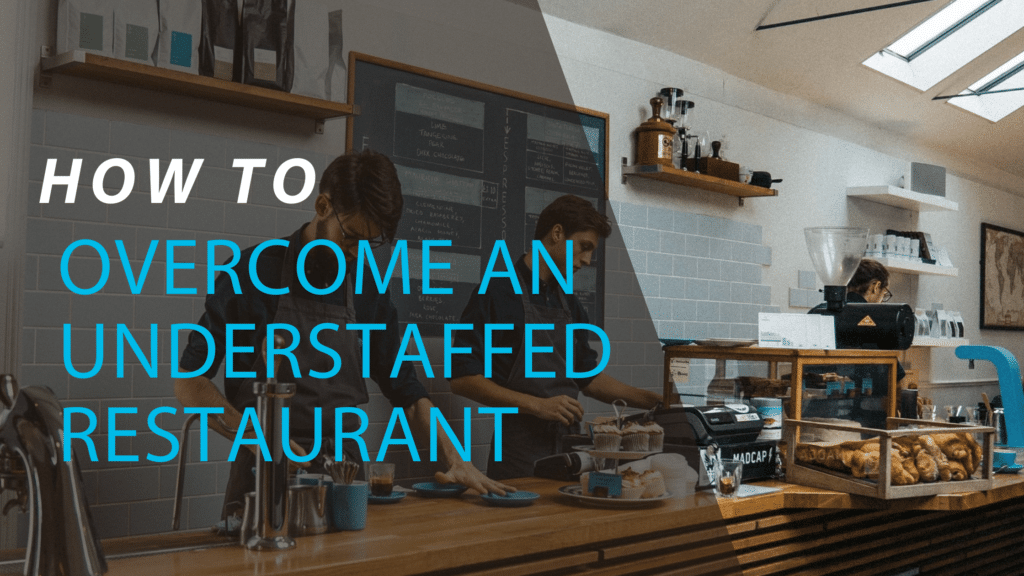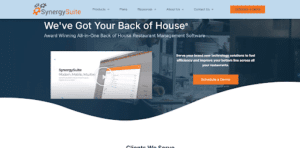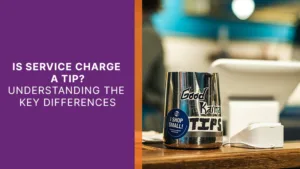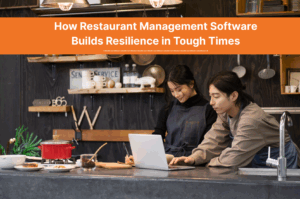Updated on: February 6, 2025
It’s no secret that the past few years have been tough on the restaurant industry. The pandemic brought about sudden shutdowns, forcing everyone in the food service industry to rethink operations overnight. Social distancing and masks turned once vibrant spaces into quiet, carefully controlled environments. Those that survived faced an entirely new challenge: a labor crisis that shows no signs of letting up.
Today, many restaurants are still struggling to stay fully staffed. What used to be a search for the best candidates has turned into a fight just to find anyone willing to fill critical roles. If you’re running an understaffed restaurant, you’ve probably wondered if things will ever go back to normal. While we can’t predict the future, we can help you adapt to the challenges of managing a perpetually short-staffed team.
The good news is that even if you’re operating with fewer hands on deck, it’s still possible to provide excellent food and service to your customers. By rethinking your operations, embracing technology, and making strategic adjustments, you can reduce the strain on your staff and keep your restaurant running smoothly.
In this blog post, we’ll break down the key reasons behind restaurant staffing shortages, the risks they pose to your business, and practical solutions you can implement to navigate this new reality. Whether it’s optimizing your hours, simplifying your menu, or exploring new formats, there are actionable steps you can take to set your restaurant up for success despite the challenges.
Restaurants are short-staffed: Why?
A previous blog about the restaurant staffing shortage covered this in more depth, but a brief overview is in order. Simply put, restaurant work is hard and demanding, and employees who previously worked in restaurants have been finding other work that they feel offers better pay, hours, and environment.
The pandemic may have shut down many restaurants, but to give just one example, places like warehouses have been doing vigorous business in the last few years and have offered jobs to those former restaurant workers that they like better. Many restaurants have tried to entice workers back with mixed success. If you’ve personally succeeded in enticing an adequate number of workers to your restaurant, then that’s good for you! Treat them right, and they’ll help you treat your customers right and bring in more business. Whether you run a fast food restaurant or rely on wait staff, treating them well will prevent staff turnover and help you prevent a future labor shortage. The subject of this blog post is how to adapt to the new reality of managing a perpetually understaffed restaurant.
The good news is that even restaurant owners without enough employees can still provide good service and good food. Here are the top ways we recommend handling restaurant staffing shortages effectively.
Front of house
Adjusting hours of operation
If you own or run an understaffed restaurant, you may need to adjust your hours of operation. This is a great way to deal with staffing shortages without harming service quality or employee satisfaction. This may not be ideal, but it can help you to utilize the restaurant employees you do have most effectively. Most restaurants have busy hours—the lunchtime rush for example. When thinking about adjusting hours, consider your menu and clientele, and choose hours that meet the needs of the majority of your customers. This will allow you to schedule enough staff members for busy times and simply shut down at other times.
Maybe your restaurant is near a major transit hub that sees large surges of traffic in the mornings and late afternoons when commuters are coming to and from work. Consider adjusting your business hours to those times of day and shutting down in the interim.
If your restaurant sees a lot of family dinner traffic, then consider shifting your staff and work hours to the evening and/or weekends and keeping the place closed on weekday mornings.
The exact adjustments that need to be made will depend on the restaurant. Our restaurant reporting software can help you analyze these patterns and identify your most busy and profitable times of day.
Consider going “all in” on dine-in or “all out” on take out
Many restaurants offer both dine-in and take-out, but if yours is an understaffed restaurant, consider choosing one over the other and adjusting your operations to maximize your clients’ experience. This will free up your staff to focus all of their energies on that set of experiences. When adjusting hours of operations, you’ll need to consider your restaurant’s strengths and your diners’ habits to decide which of these options to pivot towards.
Implement new technologies
Technology affects restaurants. Advisors worth their salt will advise restaurateurs to adopt technology to stay competitive, reduce waste, and maximize profits. Some technologies are especially helpful for addressing the challenges of an understaffed restaurant.
Self-ordering kiosks
These interactive devices provide a platform for customers to place orders and can also double as a point of sale. Kiosks do not have to be large, boxy devices. Kiosks can be as simple as a table-mounted tablet with a suite of software applications installed. These devices can be placed on individual tables or can replace registers. This frees up your staff from taking orders and processing payments without reducing employee morale or the dining experience.
Mobile apps
A mobile app installed on a customer’s phone or tablet is very similar to a self-ordering kiosk. The key difference is mobility. Customers can order and pay from their devices at your restaurant or before they arrive. This has many of the same benefits for the understaffed restaurant and the diner as self-ordering kiosks. Plus, it can be used to advertise to specific customers based on their ordering histories (privacy laws and permissions permitting).
Back of house
Keep it simple
If you haven’t already, consider simplifying or streamlining your menu so that you only offer a few items—but that your staff makes very well. In short, focus on quality options over how many menu items you offer. In addition to spending less money on inventory, this can enable you to streamline food preparation and reduce the number of cooking stations that have to be online.
For example, offering three or four different salads will enable your staff to pre-prepare them before customers arrive at your restaurant. This will speed up the serving process and free up time for your BOH staff. Experiment a little and see what other food prep processes can be sped up by pre-preparation.
Purchase pre-prepared ingredients
Do you really need to have one of your line chefs chopping vegetables or peeling potatoes? Unless such culinary mundanity is part of the experience your diners expect, these are steps of the food preparation process that do not have to be done in-house. Many vendors offer ingredients that come at least partially pre-prepared, saving your kitchen staff time.
It is certainly true that pre-prepared ingredients can cost a bit more money per unit, but the time saved by your kitchen staff may very well make up for the additional costs.
Back office
HR and employee scheduling software
Even with fewer employees, an understaffed restaurant’s manager will still want to computerize human resource management. The days of jotting down employee availability on a scratchpad or post-it note need to be put behind you. There’s simply too much room for mistakes or errors that can irritate your employees and leave you over-or understaffed. Computerizing everything will increase overall efficiency and help prevent inadequate staffing.
Good HR and scheduling software can centralize your employee data and make it easy to manage your staff from your computer, phone or tablet. It can also streamline time-off requests and hours worked. Restaurant operators who take care of their employees by paying them on time and giving them requested time off are more likely to successfully retain employees and minimize employee turnover. This, in turn, helps with current staffing challenges and prevents new issues in the future.
Marketing and advertising
Suppose you’ve implemented new technology, like what was mentioned above. In that case, you will have started to capture an enormous amount of useful data about your customers: who they are, what they eat, when they eat, how much they spend, etc.
You want your customers to return often. Analyzing the data you collect on them can be a boon for marketing and advertising, enabling you to craft marketing content that will entice them back.
Are you unsure where to start? Our suite of restaurant software applications can make the analysis process easy.
Feeling a little daring? Take Your Restaurant on the Road
If you own an understaffed restaurant, have you considered changing your format entirely? Brick-and-mortar restaurants aren’t going anywhere, but food trucks and food carts have been growing in popularity.
One benefit of doing so is that you can go to your clients. You’ll also save on the expenses of owning or renting a building and you can run a food truck on a much smaller staff. This isn’t for everybody, of course, but the events of the last two years have demanded a lot of experimentation and innovation from restaurateurs. If you’ve ever thought about shaking things up, there’s never been a better time to try.
We can help
Whether you have a fancy sit-down restaurant, a fast food franchise, a food truck, or a humble food cart selling pastries and coffee on a train station platform, we have the restaurant management tools to help you manage your operation. Get in touch with a member of our team, and they can help you figure out which software solutions we offer are right for you!






